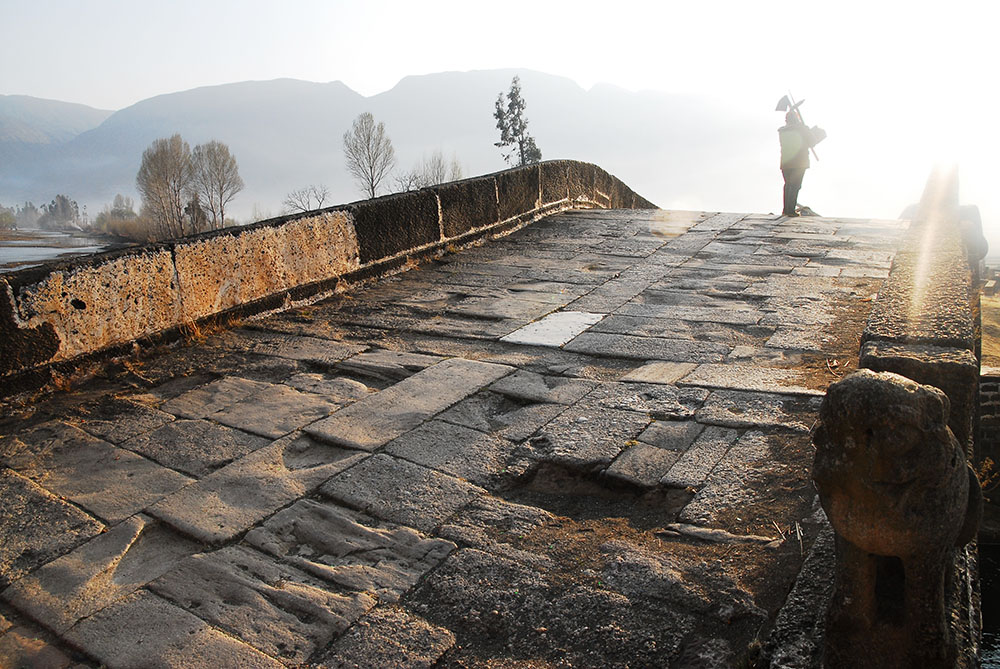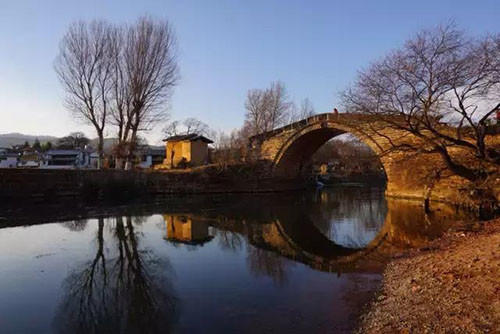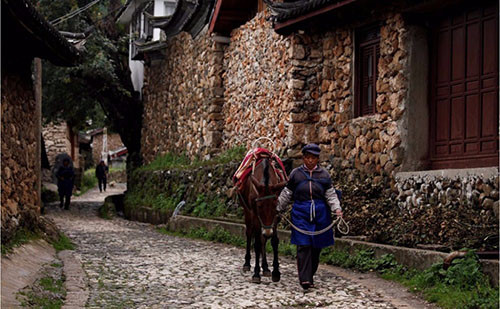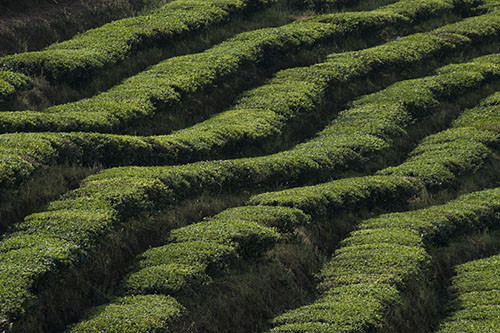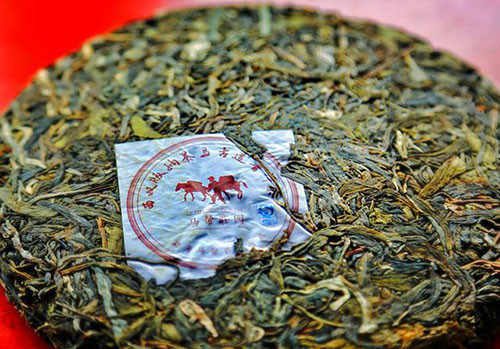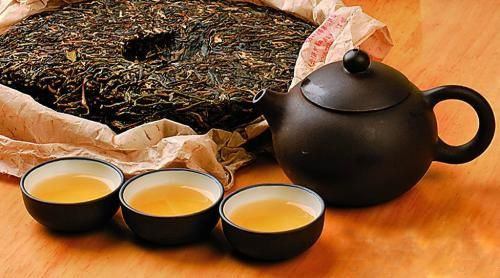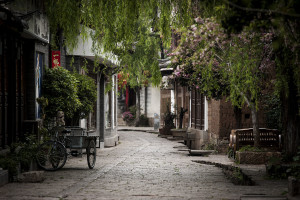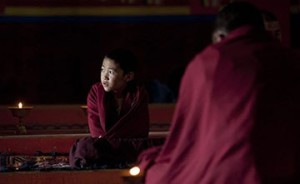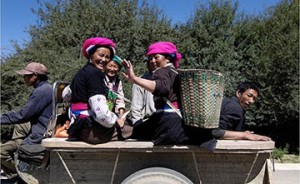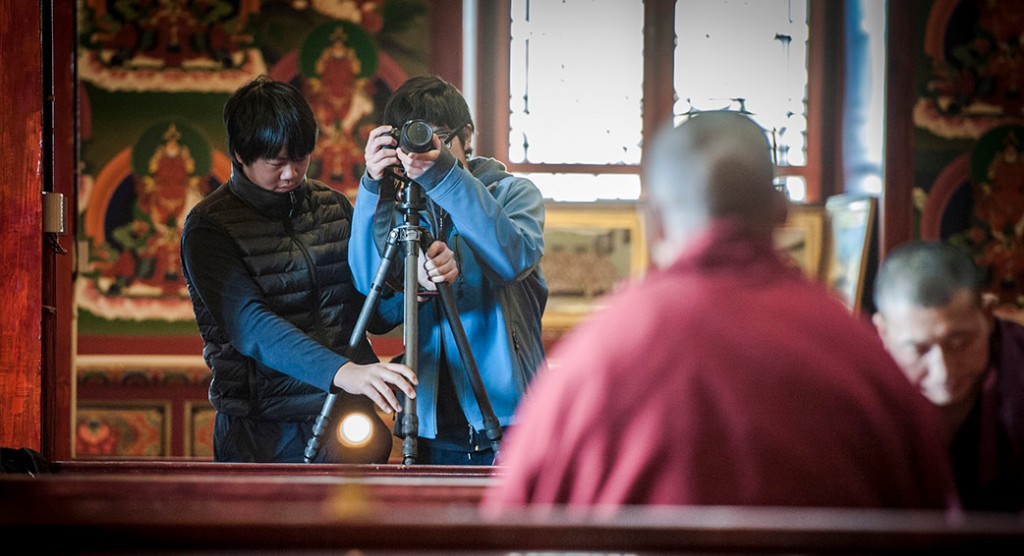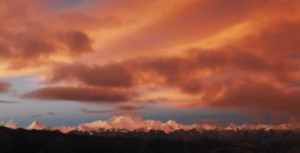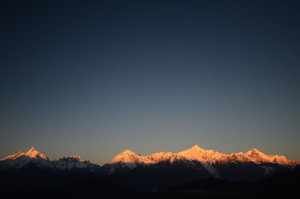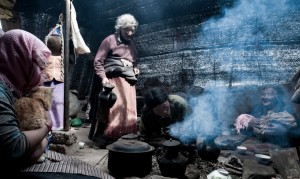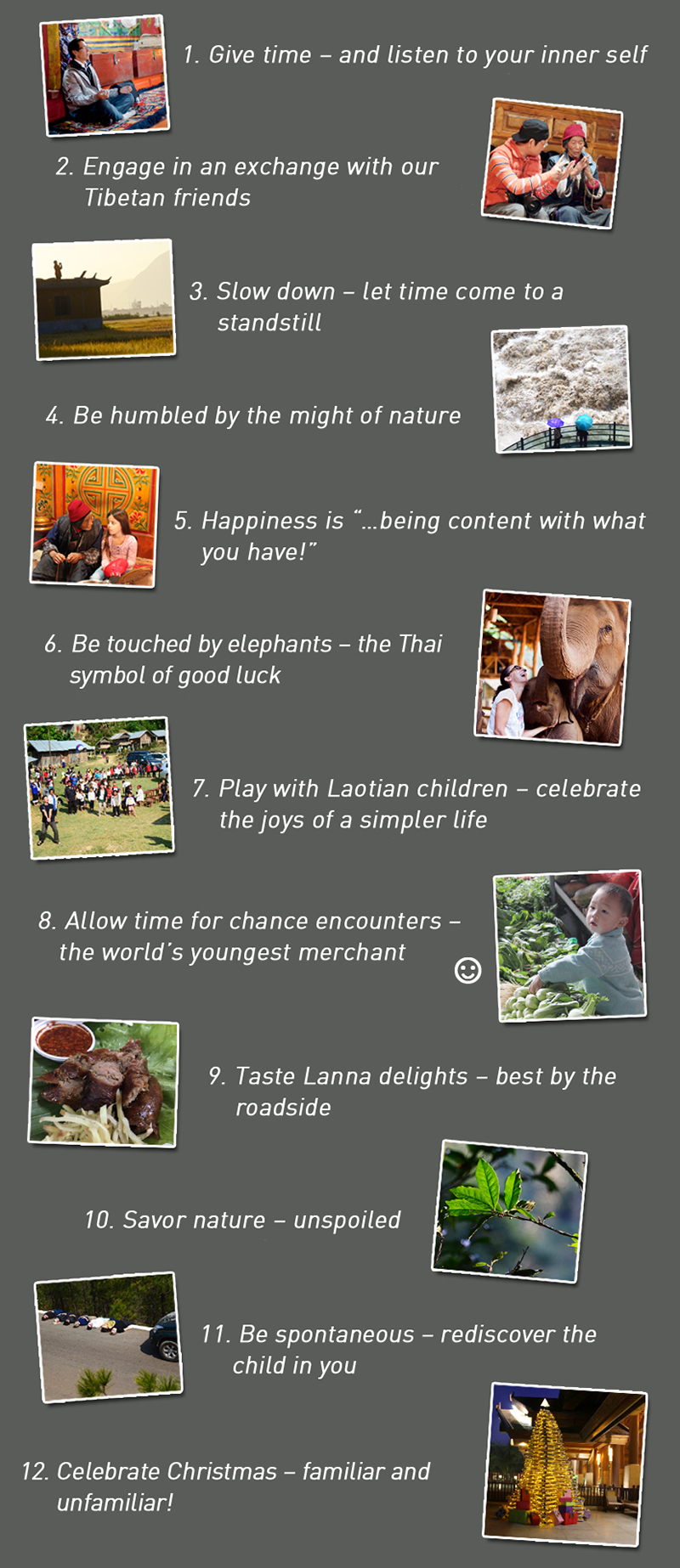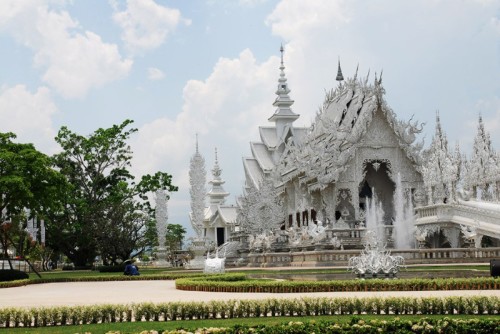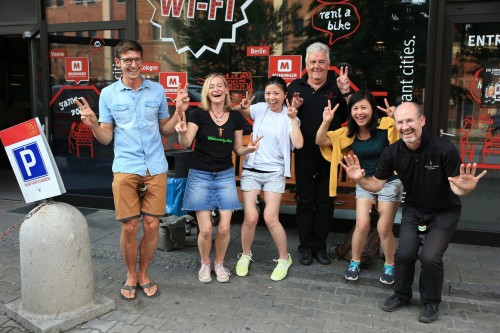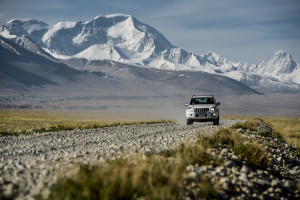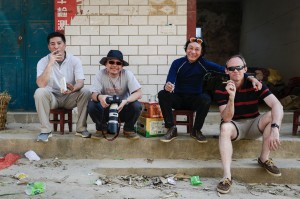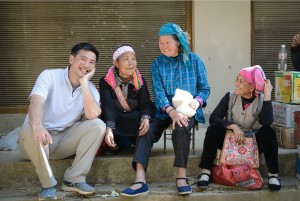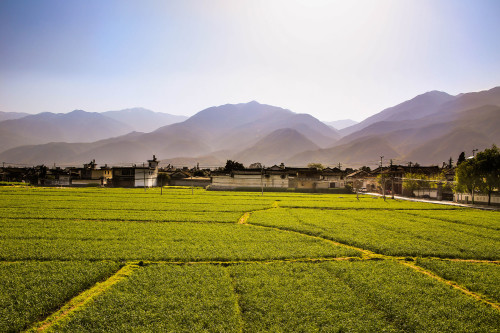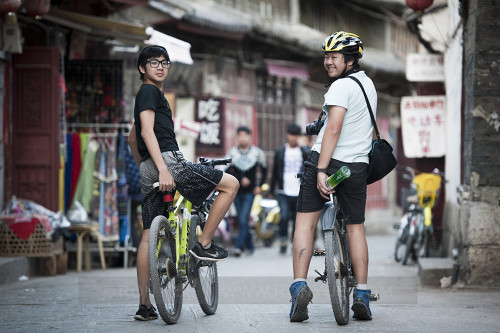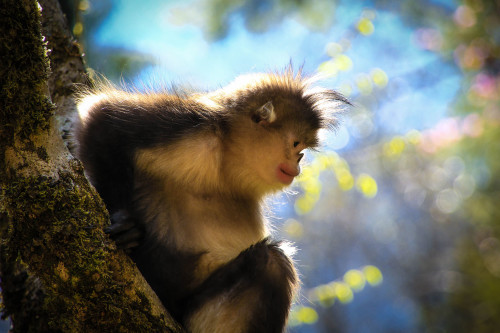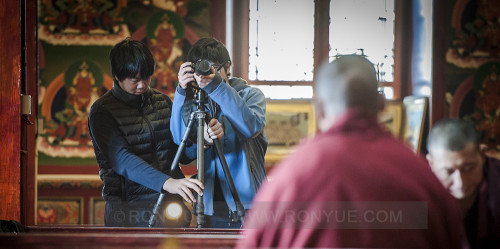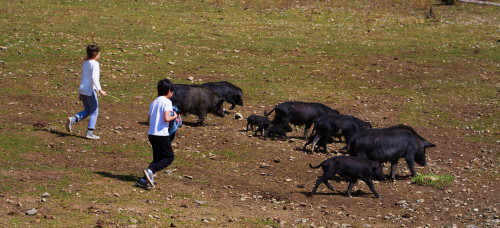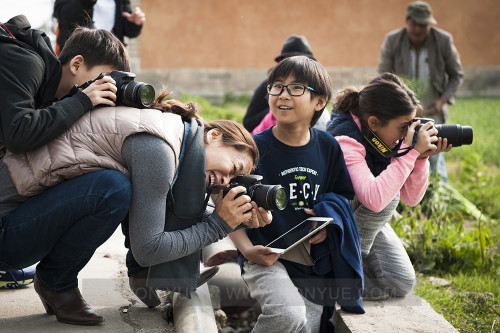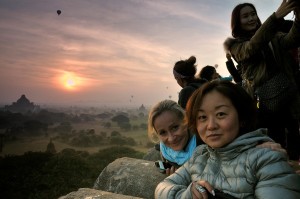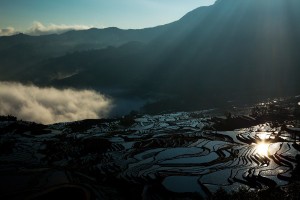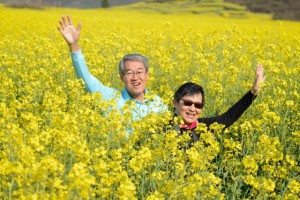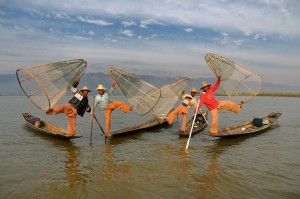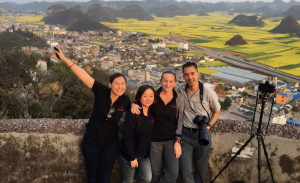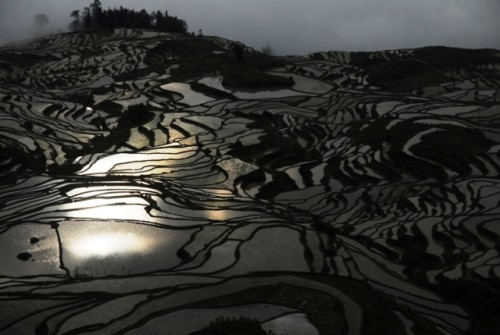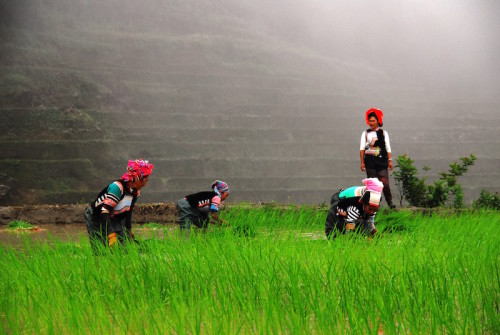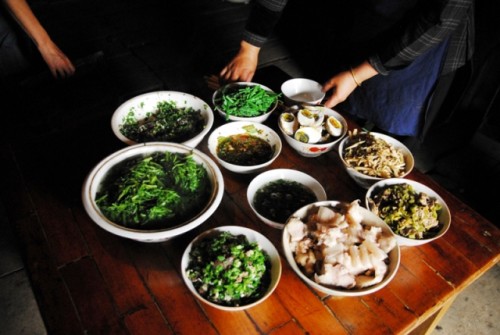Tag Archives: Yunnan
Posted on 25 May, 2017
The Tea Horse Road linked Tibet and South-East Asia for over a thousand years. Heavily-laden mule trains would trek for months from the subtropics to Lhasa, crossing some of the most challenging terrain on earth en route. And for why? All for a cup of tea…
Just outside the village of Shaxi in Yunnan, a bridge arches over the Heihui River. Its flagstones have been worn smooth by generations of travellers’ feet, and it is a beautiful addition to the landscape, but it didn’t really catch my attention until someone told me that the bridge was part of the Tea Horse Road.
It was my first trip to Shaxi, and I had barely heard of the Tea Horse Road, but there’s something about trade routes that inevitably tugs at the imagination. Epic travels over mountain ranges, across deserts and seas, all in order to exchange luxuries like silks or spices – they’re the quintessential overland journeys.
The Tea Horse Road was a network of trails that snaked from the gentle tea-growing hills of southwest China across eastern Tibet to Lhasa and beyond. Many things – beliefs, news, genes – made their way along the route, but the route was established and maintained in order to trade and transport tealeaves.
This tea came from its original home, the humid forests that sprawl across today’s southern Yunnan and northeastern Burma. Here, you can still walk into the woods to see gnarled tea trees that have been tended by Aini, Blang and Jinuo farmers for centuries. The leaves were – and are – steamed and packed into bricks or discs along with the caffeine-and tannin-rich stems and stalks, making the tea easy to transport for the long, tough journey ahead.
The route ran north, out of the subtropics and uphill to Dali, which, at the time of the first tea caravans, was the capital an independent kingdom, Nanzhao. Carried by man and by mule, the tea changed hands with each shift in the terrain. The challenges of adapting to the geographical variation en route would have been insurmountable for a single set of mules and muleteers.
Instead, the tea passed from one people to another as it worked its way north. From Dali, Bai and Hui traders took over, before handing their precious cargo over to Naxi and Yi caravans. Occasionally, the tea would reach the edge of Tibet, where lados (Tibetan muleteers) took over for the longest and most perilous stretch across the mountains of Chamdo to Lhasa.
It was tea that bound the links of this chain together. Along the route, sharing tea was considered as binding as a signature or wax seal, creating trust as it was sipped. Tea also connected the traders to the communities that hosted them, bartering tea balls for access to pasture or supplies.
And yet, while the tea itself was undeniably important to the communities the Tea Horse Road passed through, the mule trains bought something less tasty but even valued with them; Information and news of the world beyond. For many villages along the trail, the muleteers were a vital link to the wider world. When this trading route was bypassed by highways in the mid-twentieth century, these links were largely lost.
The Tea Horse Road existed for trade but it meant more than that. The journey might have been a relay, but it was also a bridge, connecting quite different groups of people to one another, with all working together for a common goal – the humbled and most refined pleasures, a cup of tea.
* * *
For those interested in reading a first-hand account of a modern journey along the Tea Horse Road, we thoroughly recommend occasional On the Road Experiences host, Jeff Fuchs’s 2008 book, “The Ancient Tea Horse Road”.
Our journeys on Tea Horse Roads…
YUNNAN THROUGH A LENS: TEA HORSE TRAILS
Capture memories as beautiful as the landscape on this photographic journey through northwest Yunnan…
Kunming – Xizhou – Lijiang – Tacheng – Shangri-La – Kunming
- • Explore this region’s incredible diversity of plant and animal life, and the large number of ethnic minorites
- • Wander cobbled streets in well-preserved old towns and feel through you and your camera are traveling back in time
- • Photographer Ron Yue will be on-hand to coach you through a series of masterclasses and workshops during this journey
Journey Dossier
Nov 3, 2017
A beautiful back road journey through Yunnan’s less well-known village treasures.
Kunming – Xizhou – Shaxi – Tacheng – Deqin – Shangri-La – Lijiang – Kunming
⦁ Discover a region of northwest Yunnan which can lay a reasonable claim to being the home of James Hilton’s fictional Shangri-La!
⦁ Enjoy the perfect combination of adventure and luxury; often you will find yourself in the middle of nowhere and yet every evening you will be in charming hotels
Journey Dossier
Nov 17, 2017
FROM SHANGRI-LA TO THE LANNA KINGDOM
Cross the borders of three countries within a journey!
Where do we go?
Day 1: Arrive in Kunming
Day 2: Shangri-La to Lijiang
Day 3: In & around Lijiang
Day 4: Lijiang to Xizhou
Day 5: Xizhou to Dianchi Lake
Day 6: Dianchi Lake to Menglun
Day 7: In & around Xishuangbanna
Day 8: Menglun to Luang Namtha
Day 9: Luang Namtha to Chiang Saen
Day 10: In the Golden Triangle
Day 11: Chiang Saen to Chiang Mai
Day 12: Depart from Chiang Mai
What you will discover
Journey Dossier
Dec 22, 2017
Posted on 22 Apr, 2017
When is a photo more than a photograph?
The interview wasn’t going to plan. I was talking to two young people, Hugo (11) and Astrid (8), who joined our first family photography trip a year ago. The thing was, they couldn’t remember very much about it. I had arrived with a neat set of questions: Were you interested photography before the trip? What was the most memorable part? Astrid remembered a friendly dog; Hugo a young boy playing with blocks.
We began to look through photography coach, Ron Yue’s photographs from the trip. These jogged their memories, and more details began to emerge – though seldom the ones I expected.
|
The itinerary starts in Kunming before heading to north-west Yunnan, taking in Dali, Shaxi, Lijiang, Tacheng before it ends in Shangri-La. I know the route very well, having driven it maybe twenty times, and love it for the vernacular architecture, minority cultures and beautiful scenery en route. But Hugo and Astrid had experienced the trip quite differently.
As we turned to look at the photos the children had taken themselves, funnier and more personal stories surfaced; one about Astrid riding a goat, another about someone photo-shopping pimples all over a photograph of his friend’s face, before Hugo turned the boy’s picture purple.
They each picked out specific photographs – Hugo had taken a clutch of photos in Lijiang on a setting that turned the evening sky electric blue, leaving the streetlamps shining a warm orange light onto the crowds below, Astrid had spent time trying to capture a beautiful lock from an interesting angle. We oohed and aahed over some more great shots of the monkeys, and found a picture of Astrid’s friendly dog.
Our conversation made me realise how much I expected them to trot out the same things that I find noteworthy about the itinerary. It was refreshing and interesting to see familiar places in a new way, and a valuable reminder that we all see and experience the world differently. And that comes through in all our photographs, whether we’re young or old, novice or seasoned professional.
On every photo trip I’ve hosted, the final night wrap-up session, where everyone shows their best photos from the trip, has led guests to ask one another “Where did you take that?” – because it shows an aspect of something they didn’t notice themselves. But, equally, another thing that I appreciate again after talking to Astrid and Hugo is just how effective photographs are at capturing a moment, a mood and a feeling. Of course, looking at their shots reminded them of what was shown in the photograph itself, but it also helped them to recall other stories and moments from the trip. When I spoke to Ron about this, he agreed; “I think I can remember the circumstances behind almost every photo I’ve taken – the back story, a general feeling,” and this from a man who takes pictures for a living.
So there it is; each of us puts more of ourselves into our photographs than we might realise, just as we get more out than we might expect. My thanks to Astrid and Hugo for reminding me of this – as well as for proving that it is, indeed, possible to ride a goat. |
Our journeys for family and kids… Where do we go? Day 1: Arrive in Kunming What you will discover ⦁ Experiences, not things ⦁ Give your children the gift of ⦁ Come home with wonderful
Journey Dossier
————————————  Go on a Family Holiday you will never forget! Go on a Family Holiday you will never forget!Where do we go? Day 1: Arrive in Kunming What you will discover ⦁ Introduce you and your ⦁ Come up-close-and-personal ⦁ Practice your Mandarin… Journey Dossier
Stories |
Posted on 14 Apr, 2017
Yunnan’s food is one of China’s most delicious surprises, yet Yunnanese cuisine is not well known outside China. Why is this the case? We look at six foods that define this fascinating and beautiful province.
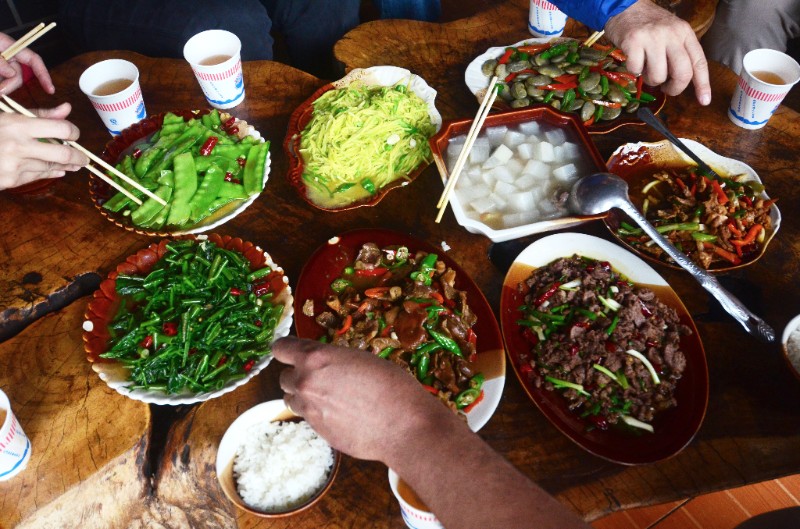
 Too often, Yunnanese cooking overseas is reduced to a single dish – “crossing bridge noodles” (see below for the story behind this dish’s name). Individual bowls of piping hot broth are served along with plates of raw meat, vegetables and noodles that diners tip into the soup to cook. While people from Yunnan certainly do love a bowl of rice noodles, there’s much, much more to food here.
Too often, Yunnanese cooking overseas is reduced to a single dish – “crossing bridge noodles” (see below for the story behind this dish’s name). Individual bowls of piping hot broth are served along with plates of raw meat, vegetables and noodles that diners tip into the soup to cook. While people from Yunnan certainly do love a bowl of rice noodles, there’s much, much more to food here.
Thanks to Yunnan’s varied topography and climate, the province’s markets are filled with a huge range of fresh, seasonal produce. Exotic fruit thrives in the warmth of tropical Xishuangbanna; huge ears of corn ripen in the fertile land around Dali; Dongchuan’s rust red soil produces wonderful potatoes; sweet, crisp apples grow around Lijiang, and fungi with fantastic names (termite mushrooms, anyone?) are dried and exported from Yunnan across Asia.
Each of Yunnan’s ethnic groups puts its own twist on the preparation of these local ingredients. Around Shangri-La, Tibetan cooks flavor dishes with dried peppers and cumin; the Drung of the Salween Valley traditionally cook on heated stones; Xishuangbanna’s Dai people enjoy a combination of intense chili heat and pickled sourness that can make a good Dai meal feel like an assault on the tastebuds.
All this variety makes Yunnanese food tricky to define. Indeed, one reason why Yunnanese food is little-known outside its home territory is that there’s little agreement over what exactly Yunnanese cuisine is – besides crossing bridge noodles, that is. Another reason is that many of the more unusual ingredients are downright impossible to find outside of south-west China – from fishwort roots (折耳根) to bee pupae. However, such exotic things don’t really tell the story of the province. These, more humble, everyday foods do:
1. Rice
 Rice in one of its forms – steamed rice, sticky rice or rice noodles – is the core of most Yunnanese meals. Tiers of rice paddies that have been carefully maintained by generations of farmers are a testament to the crop’s importance, especially in the south-east of Yunnan, home of Yuanyang’s spectacular “ladder fields”.
Rice in one of its forms – steamed rice, sticky rice or rice noodles – is the core of most Yunnanese meals. Tiers of rice paddies that have been carefully maintained by generations of farmers are a testament to the crop’s importance, especially in the south-east of Yunnan, home of Yuanyang’s spectacular “ladder fields”.
Rice noodles have evolved into many different varieties in Yunnan (flat ones, round ones, thick ones, skinny ones, soft ones, chewy ones), and are especially popular at breakfast time, when they are served in soup and topped with ground meat, fresh herbs and lashings of chili. It’s worth seeking out a Yunnanese special – ersi made from cooked rice, which gives the noodles an unusual (and delightful) chewy texture.
It’s also worth making a fairly long detour to try Dai pineapple rice in Xishuangbanna. Soaked sticky rice is mixed with the flesh of a ripe pineapple and steamed inside the pineapple shell, producing a nectar-sweet antidote to the chili-fueled heat of the typical Dai meal. Which brings us to…
2. Chili peppers
Sandwiched, as it is, between Sichuan and South-East Asia, it is unsurprising that Yunnan shares its neighbours’ love affair with the chili pepper. On an early On the Road trip, the lead car was scene of a heated and protracted debate between our Yunnanese guide and Sichuanese driver as to which province’s food was the hotter.
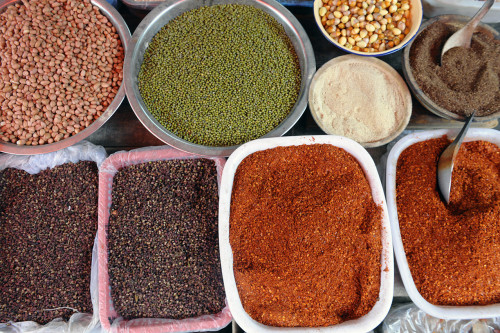 The jury may still be out on that important question, but dried and fresh chilies as well as mouth-numbing Sichuan pepper are all used frequently in Yunnanese kitchens. Happily for the faint of palate, their addition is often optional – a saucer of chopped chili or chili sauce placed on the table.
The jury may still be out on that important question, but dried and fresh chilies as well as mouth-numbing Sichuan pepper are all used frequently in Yunnanese kitchens. Happily for the faint of palate, their addition is often optional – a saucer of chopped chili or chili sauce placed on the table.
3. Mushrooms
A remarkable 800 varieties of edible mushroom (from a total of 3,000 known types worldwide) can be found in Yunnan, the region being a biodiversity hotspot for fungi, as well as plants and animals. Some are familiar – porcini, chanterelles, summer truffles – while others are decidedly less common – tripe-like zhusun and poisonous-looking green cap mushrooms, for example.
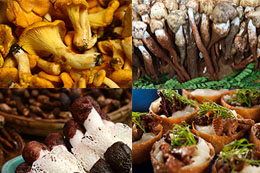 King of them all, however, is the songrong or matsutake, prized in Japan (where it commands prices of up to US$1000 per pound) for its fragrance and meaty texture. In local homes, fresh mushrooms will be simply stir-fried with a little bacon and slices of fresh green chili, but in Kunming’s restaurants the preparation is altogether more sophisticated, with songrong topping a slab of foie gras or a delicate steamed custard.
King of them all, however, is the songrong or matsutake, prized in Japan (where it commands prices of up to US$1000 per pound) for its fragrance and meaty texture. In local homes, fresh mushrooms will be simply stir-fried with a little bacon and slices of fresh green chili, but in Kunming’s restaurants the preparation is altogether more sophisticated, with songrong topping a slab of foie gras or a delicate steamed custard.
4. Cheese
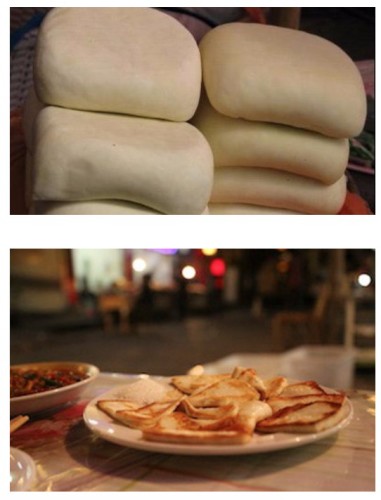 Unusually for China, two ethnic groups in Yunnan have been producing and consuming cheese for centuries. Separated by 500km of non-cheese eating minorities, the Bai and Sani may have developed their cheese-making techniques and traditions in isolation.
Unusually for China, two ethnic groups in Yunnan have been producing and consuming cheese for centuries. Separated by 500km of non-cheese eating minorities, the Bai and Sani may have developed their cheese-making techniques and traditions in isolation.
However, one tantalizing theory has the Mongolian armies of Kublai Khan introducing cheese-making in the wake of their invasion of the Dali Kingdom in the mid-thirteenth century. (Amazingly, there are still ethnic Mongolian communities in Yunnan today – the descendants of the Khan’s garrisons.)
The Bai of Dali make slabs of white paneer-like rubing from cow’s milk, while the Sani people from Shilin, southeast of Kunming make a similar cheese from sheep’s milk. Rubing is delicious when fried (it doesn’t melt) and sprinkled with salt or sugar. The Bai also make rushan, wafer-thin sheets of cheese that you will see stacked in rolls outside Bai restaurants around Dali.
5. Wind-cured ham
In village houses across northern Yunnan, you’ll often see legs of ham – trotters still attached – lurking in the rafters. As with all the best local foods, there is much competition between counties that claim to produce the most delicious version; Xuanwei’s ham may be the best-known, but the black pigs raised on the banks of the Salween and those from around Lake Erhai are now acknowledged to produce some of the best.
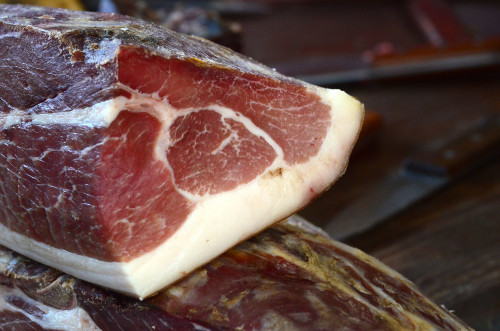 Historically, Yunnan has never been a wealthy province; for many people here, meat had to be used sparingly. Salting and drying pork to preserve it and intensify its flavour was one of the best ways to do this. Typically, slices of ham might be tossed into fried vegetables, served with rubing in a kind of Yunnanese ham and cheese, or in one unusual dish, sizzled on a hot roof tile (瓦掌风肉).
Historically, Yunnan has never been a wealthy province; for many people here, meat had to be used sparingly. Salting and drying pork to preserve it and intensify its flavour was one of the best ways to do this. Typically, slices of ham might be tossed into fried vegetables, served with rubing in a kind of Yunnanese ham and cheese, or in one unusual dish, sizzled on a hot roof tile (瓦掌风肉).
6. Pu’er tea
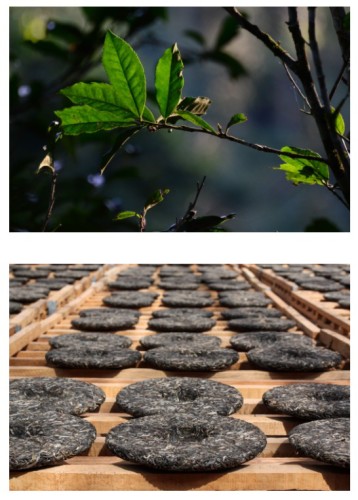 For those of us used to seeing tea bushes in neat ranks, pruned to hip height, the sight of a wizened tea tree deep in tropical jungle seems almost odd. And yet the leaves of these aged trees produce some of the finest tea in the world.
For those of us used to seeing tea bushes in neat ranks, pruned to hip height, the sight of a wizened tea tree deep in tropical jungle seems almost odd. And yet the leaves of these aged trees produce some of the finest tea in the world.
Bricks of tea from southern Yunnan have been exported around Asia for hundreds of years. Leaves of the wild tea trees are dried, fried and steamed into dimpled circles. Once upon a time, these would then be stacked onto mules for the long trek to Tibet. The tea would slowly age on its journey, bringing a depth of flavor that is now much prized – though many accounts of this “tea horse trail” have the Tibetans showing more interest in the tea’s ability to alleviate the effects of a meat-heavy diet, rather than the health-giving qualities we recognize today. Many small towns in north-west Yunnan – Shaxi and Jianchuan, to name two – grew up around overnight stops used by the tea caravans, spreading Pu’er tea’s impact across the province and down the centuries.
*Legend has it that a Qing-dynasty scholar retired to Mengzi in south-east Yunnan where he spent each day in a lakeside pavilion, writing poetry. His wife brought him noodles for lunch each day. The noodle soup cooled on the walk between kitchen and pavilion until she hit upon the idea of topping the broth with a layer of oil, thus sealing in the heat for her journey.
Explore Yunnan’s foods with our journeys…
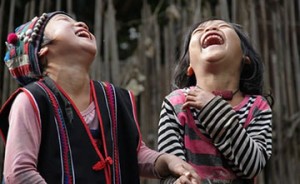 Adventures in Yunnan will take you and your family through some of Yunnan’s best loved destinations like Dali, Lijiang and Shangri-La and via some little-known gems on an itinerary designed specifically for families to enjoy together.
Adventures in Yunnan will take you and your family through some of Yunnan’s best loved destinations like Dali, Lijiang and Shangri-La and via some little-known gems on an itinerary designed specifically for families to enjoy together.
- 10-day journey
- Kunming – Dali/Xizhou – Shaxi – Tacheng – Shangri-La – Lijiang
- Journey Dossier
 Family Adventures: Travel Photography in Yunnan is a family holiday you will never forget, a chance to discover new lands and people and to engage with a hobby – photography! – that may become a lifelong, shared passion among parents and children.
Family Adventures: Travel Photography in Yunnan is a family holiday you will never forget, a chance to discover new lands and people and to engage with a hobby – photography! – that may become a lifelong, shared passion among parents and children.
- 10-day journey
- Kunming – Dali/Xizhou – Lijiang – Tacheng – Shangri-La
- Journey Dossier
 Searching for Shangri-La takes you on back roads through Yunnan’s less well-known village treasures to the edge of Tibet
Searching for Shangri-La takes you on back roads through Yunnan’s less well-known village treasures to the edge of Tibet
- 9-day journey
- Kunming – Dali/Xizhou – Shaxi – Tacheng – Deqin – Shangri-La – Lijiang
- Journey Dossier
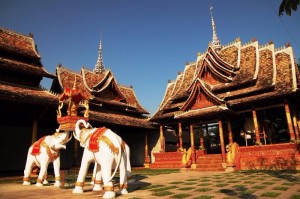 Shangri-La to the Lanna Kingdom will take you from ethnically Tibetan Shangri-La to the tropical heart of the Golden Triangle, then on to Chiang Mai in Thailand – former capital of the ancient Lanna Kingdom.
Shangri-La to the Lanna Kingdom will take you from ethnically Tibetan Shangri-La to the tropical heart of the Golden Triangle, then on to Chiang Mai in Thailand – former capital of the ancient Lanna Kingdom.
- 12-day journey
- Kunming – Lijiang – Xizhou – Xishuangbanna – Luang Namtha – Chiang Sean – Chiang Mai
- Journey Dossier
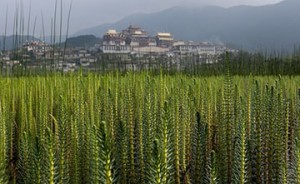 Yunnan through a Lens: Tea Horse Trails – capture memories as beautiful as the landscape on this photographic journey through breath-taking north-west Yunnan.
Yunnan through a Lens: Tea Horse Trails – capture memories as beautiful as the landscape on this photographic journey through breath-taking north-west Yunnan.
- 9-day journey
- Kunming – Xizhou – Lijiang – Tacheng – Shangri-La
- Journey Dossier
Posted on 6 Mar, 2017
Northwest Yunnan is one of the most diverse, beautiful and fascinating regions of China. But why is this the case?
Posted on 5 Dec, 2016
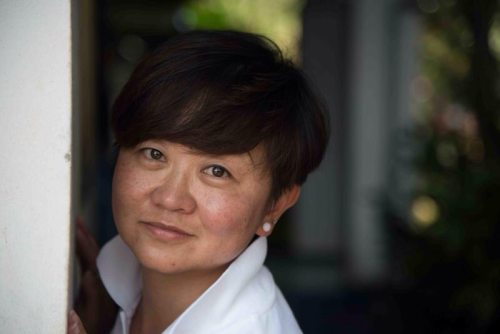 Everyone who has been on an On the Road trip with our super-guide Nancy Wu will understand why she is our first On the Road Star. With a wicked sense of humour, bags of energy, an encyclopaedic knowledge of Yunnan’s people and places, and peacock dancing skills that are in a class of their own, she has given many of us happy memories from our journeys with her. I sat down to talk with her about her and her work:
Everyone who has been on an On the Road trip with our super-guide Nancy Wu will understand why she is our first On the Road Star. With a wicked sense of humour, bags of energy, an encyclopaedic knowledge of Yunnan’s people and places, and peacock dancing skills that are in a class of their own, she has given many of us happy memories from our journeys with her. I sat down to talk with her about her and her work:
First of all, why did you become a tour guide?
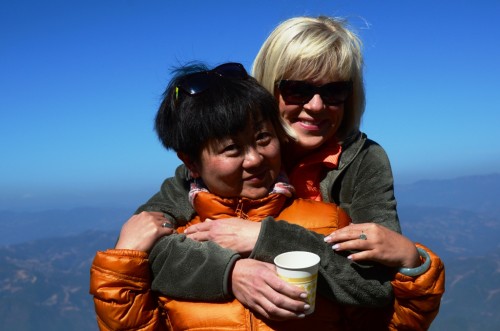 Not the reason you might think! I’ve always liked using language as a tool and working with people – the worst job for me would be working alone in an office. When I was a child I would always sign up for public speaking opportunities and debate teams, and originally I wanted to be a lawyer. But my father told me that I would never look the part, because I’m too short! That might sound silly, but Chinese people care about things like that, so I started thinking about other options. By then I was studying English at university, and tourism was taking off in Yunnan, so I decided to train as a tour guide. My mother used to organise trips for a workers’ organisation, so perhaps I took some inspiration from travelling with her when I was little…
Not the reason you might think! I’ve always liked using language as a tool and working with people – the worst job for me would be working alone in an office. When I was a child I would always sign up for public speaking opportunities and debate teams, and originally I wanted to be a lawyer. But my father told me that I would never look the part, because I’m too short! That might sound silly, but Chinese people care about things like that, so I started thinking about other options. By then I was studying English at university, and tourism was taking off in Yunnan, so I decided to train as a tour guide. My mother used to organise trips for a workers’ organisation, so perhaps I took some inspiration from travelling with her when I was little…
And now that you’ve been doing it for 15 years, what do you love most about your job?
I really enjoy introducing things that I find beautiful to my guests, and sharing with them. I learn from them and they learn from me! As we travel we all become friends and I’m able to interpret Chinese culture for them, and maybe correcting misunderstandings that people from overseas have about China.
What’s the worst part of your job?
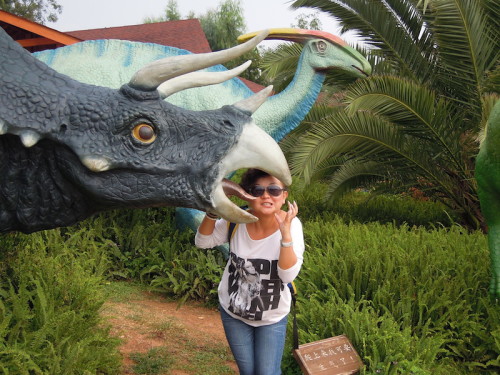 The worst part of my job is related to the best part! When I’m travelling, I often come across Chinese people doing things in an… uncultured way, just because they don’t know any better. It drives me crazy, because I want to show off the best of Chinese culture, and don’t want my guests to think that we’re all uncultured! Sometimes I can help to improve whatever it is they’re doing badly, and sometimes I end up feeling embarrassed and caught in the middle. I understand why they’re doing it, but I can also see things from my guests’ perspective. So all I can do is to try and communicate with both!
The worst part of my job is related to the best part! When I’m travelling, I often come across Chinese people doing things in an… uncultured way, just because they don’t know any better. It drives me crazy, because I want to show off the best of Chinese culture, and don’t want my guests to think that we’re all uncultured! Sometimes I can help to improve whatever it is they’re doing badly, and sometimes I end up feeling embarrassed and caught in the middle. I understand why they’re doing it, but I can also see things from my guests’ perspective. So all I can do is to try and communicate with both!
How did you learn the Dai peacock dance?
My mother liked dancing, and I often went to watch dance performances with her. So I’ve enjoyed dancing ever since I was little, but I’ve never studied formally. I just taught myself the peacock dance, but I’d be a lot better at it if I’d started when I was younger.
What are you favourite places in Yunnan?
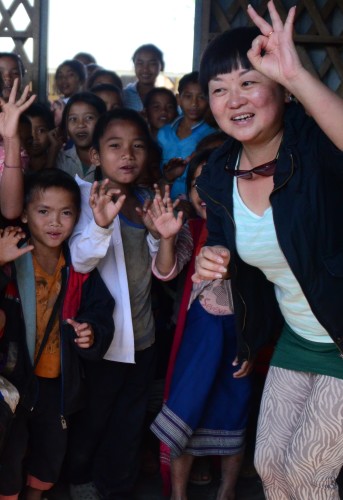 Jianshui! Jianshui is one of the places I like best – I prefer small towns with their own character to big cities. In Jianshui the people are very cultivated, the pace of life is nice and slow, and – very importantly – the food is good. Then I like Xishuangbanna (again the food is delicious) and Dali. Near Kunming, I like Shilin [the Stone Forest] and Qiongzhu Si [Bamboo Temple] the best – one is full of visitors, the other is very quiet and peaceful, and you can sit and drink tea…
Jianshui! Jianshui is one of the places I like best – I prefer small towns with their own character to big cities. In Jianshui the people are very cultivated, the pace of life is nice and slow, and – very importantly – the food is good. Then I like Xishuangbanna (again the food is delicious) and Dali. Near Kunming, I like Shilin [the Stone Forest] and Qiongzhu Si [Bamboo Temple] the best – one is full of visitors, the other is very quiet and peaceful, and you can sit and drink tea…
And which of On the Road’s itineraries do you like most?
The one with Jianshui in it! Haha… I really enjoy the drive from Jianshui via Yuanyang and Jiangcheng to Xishuangbanna, then on to Thailand [“From Yunnan to the Lanna Kingdom”]. But I also like the new Burmese itinerary, perhaps because my mother was half-Burmese…
Finally, you always seem to know the best restaurants to visit and the tastiest dishes to order – and your cooking is great too! What do you like to eat most?
 Barbecue! Spicy barbecued fish is one of my absolute favourite things to eat, but barbecue restaurants here sell lots of different dishes – rice noodles, different vegetable dishes, meat and fish. As long as it’s spicy, I love it. When Peter took me to Europe, I was dying for something good and spicy to eat! [Smacks lips.]
Barbecue! Spicy barbecued fish is one of my absolute favourite things to eat, but barbecue restaurants here sell lots of different dishes – rice noodles, different vegetable dishes, meat and fish. As long as it’s spicy, I love it. When Peter took me to Europe, I was dying for something good and spicy to eat! [Smacks lips.]
Thank you, Nancy!
Posted on 23 Sep, 2016
For many of us, the end of the year is a time for taking time off to reflect upon the year past and the year to come. For some of us, it is the time to celebrate Christmas and time for giving. Giving often means the “things”. But we believe the memories of meaningful experiences last longer…
On the way from Shangri-La to Chiang Mai in Thailand, during 12 days, here are 12 gift ideas :
Join the “gift-to-yourself-and-your-family” journey: Over Christmas and New Year!
From Shangri-La to the Lanna Kingdom – December 22, 2016
-
An unforgettable way to close out 2016 and start the new year!
-
Click here for more info
-
In a nutshell
-
What?
-
Travel from Shangri-La in Yunnan via Nothern Lao to Chiang Mai in Thailand
-
Luxury, Comfort and Adventure all in one
-
Christmas in wintry Shangri-La
-
New Year in subtropical Thailand
-
How long? 8 or 12 days
-
-
We look forward to welcoming you on what will be one of the most memorable journeys of your life!
Posted on 30 Aug, 2016
I have been working for On the Road Experiences since 2013. I started as a host…
What does a “host” do? As a journey host I oversee the whole journey from greeting guests on the first day until we all say goodbye on the last. I am responsible the service we provide and for the experiences guests enjoy; our aim is to make each journey enjoyable for all parties involved.
My role has grown over the years, and now I enjoy researching new itineraries, enhancing our existing journeys, and meeting guests before they join a trip and developing the German market. Peter gives my colleagues and I the chance to grow – sometimes it seems that every day I find myself with a new project, which makes me busy and happy!
Looking back at all the journeys I have hosted, I remember a lot of laughter and happiness, and my hard-drive is full of pictures of sunsets, beautiful landscapes and people. Two things that I can’t capture on film, though, are the hard work and long days that go into making each journey a success.
Explaining my job to friends isn’t easy, because it is not at all like being on holiday, and neither is it “just” being a tour guide. We have to work with the fact that on each journey there will be many unforeseen events along the way – hopefully these will be fun things, such as yaks on the road or coming across a colorful local festival, but they might include road closures or even landslides.
In March, for example, we got held up by market day in a small village on the way to Puzhehei, where all the roads were gridlocked with trucks both big and small.
Nobody could move until the stallholders began to clear up two to three hours later. Thinking of it now, the pictures it brings to my mind are of our guests sitting on the side of the road, relaxing – one smoking a cigar, and chatting with the market-goers.
Our drivers got stuck in, handling and coordinating the traffic while the policemen lolled about drunk on the pavement! I love that our guests and my colleagues managed to make the most out the afternoon and still find something good in a situation that wasn’t so good. It was very hot that day. As I tried to get cold drinks to keep us all refreshed, I ended up going from shop to shop as I discovered that none of the fridges were working! Finally, in a tiny shop I found cold beverages and local snacks, which I took back for us all to share.
This kind of experience is a good reminder for everyday life – of course I had all sorts of worries going through my mind: “What if we’re stuck here forever? “How long will this traffic jam last?” “What are our customers thinking?” “Will it get dark before we arrive?” “Are there any short cuts we could use?”, and so on and on… And I wished that we might have had a smoother journey on that day, but the reality is that life doesn’t always go to plan, and sometimes you just have to make the best most out of whatever happens!
Curiously, almost without fail, it is the unforeseen events, well handled, that our guests remember the most after we return home. Sometimes it’s the bends in the road that are the most memorable and meaningful!
Posted on 15 Apr, 2016
When we first came up with the idea behind “Adventures in Yunnan”, we weren’t sure how it would be received. We had a hunch that a family driving holiday in Yunnan could be great fun, but would anyone be adventurous enough to join us with their kids?
We put together a 10-day family-friendly journey that ran from Kunming to Lijiang in short chunks with plenty of interesting stops along as many quiet back roads as possible, and began to spread the word. Four daring families signed up for the first trip and off we went. The question now was how long would it take before the cry of “Are we nearly there yet?” was heard?
After leaving Kunming, our first stop was at Yunnan’s Dinosaur Valley, the site of a “dinosaur graveyard” where palaeontologists have unearthed hundreds of complete dinosaur skeletons since excavation began in the 1930s. Armies of reconstructed dinosaurs seem to march across the main hall, while scientists work away below, discovering yet more ancient bones. Exciting enough in its own right, when coupled with the small theme park that surrounds the museum, we had a hard time persuading anyone to leave – even with the promise of lunch ahead.
That first day’s drive ended in Xizhou, home of the Linden Centre, one of our favourite hotels in the region, and – it turns out – a great place for families with children. The second morning saw us walking through the rice fields and into the village to see the daily market, where our guests practised their Mandarin as we stocked up on Xizhou baba, a delicious local snack of fried dough smeared with rose jam. The region around Xizhou and Dali has plenty of other activities on offer, and that first trip saw us riding a cable-car up into the Cangshan Mountains to visit a Taoist temple, cycling down quiet village lanes and eating cream cakes in a German-run bakery – making it well worth the two nights we spent there.
From Xizhou we drove on to Shaxi, a small village packed with well-preserved examples of traditional Bai architecture. Our group walked out into the cornfields, picnicked and happily poked about the village streets – really a world away from the choked city streets of Beijing or Shanghai that often spring to mind when thinking about travel in China.
On leaving sleepy Shaxi, we drove up the Yangtze Valley to the tiny hamlet of Tacheng. The upper reaches of the Yangtze Valley (where the river is known in Chinese as the Jinshajiang, or “River of Golden Sand”) are wonderfully scenic, with thickly forested slopes dropping away to the sandy riverbanks. Tacheng lies at the edge of the Baimashan Nature Reserve in an area famed for its biodiversity. We made time here to drive up into the reserve to spy on its most adorable residents – troops of Yunnanese snub-nosed monkeys munching on the moss that festoons the reserve’s ancient trees.
Beyond Tacheng it was a steep climb to the Tibetan region around Shangri-La, where we petted yaks and visited a Tibetan family in their home. There, our guests had the opportunity to try tsampa, a dish of ground roast barley mixed to a paste with tea and butter. Younger members of the group announced it was “just like Play-doh” and spent a happy half hour moulding it into animal shapes, before heading off for a more spiritual stop at the huge Ganden Sumtseling Monastery.
Our last few nights were spent in the bustling city of Lijiang. One of Yunnan’s most popular destinations, this town lies in a beautiful valley dotted with pretty villages and headed at its northern end with the 5,600 metre-tall (18,360 feet) Jade Dragon Snow Mountain. Between horseback riding and watching a fantastic open-air show in the mountain’s shadow, trying to find our way through the labyrinthine old town and playing in the hotel pool, before we knew it the trip was over and we were on our way to the airport to fly home.
Did anyone – parents or children – ever ask if we were nearly there yet? No, not to my memory! As a host, this itinerary really was one of my favourites. Our younger guests revelled in being taken out of their everyday environment and exposed to so many new and interesting things. Every day my colleagues and I were asked a slew of new questions, every day we staff saw something afresh through the children’s eyes, or had our attention drawn to something we hadn’t noticed previously.
“Adventures in Yunnan” has gone on to become one of our most popular itineraries, with multiple departures each year timed to coincide with the school holidays. Recently we’ve added a photography-themed version of the journey, where our photographer Ron coaches guests through a fun series of travel photography field workshops.
One of the fathers from that first trip later told me, “Because your team took care of everything, we were encouraged to do something more daring than we would have attempted on our own, but now we’ve been inspired…” Since then they’ve been travelling all over Asia as a family – be warned, adventures as a family can become addictive!
Our family-oriented journeys include:
“Adventures in Yunnan“
“Family Adventures: Travel Photography in Yunnan” (with Ron Yue)
Posted on 28 Mar, 2016
Since our last update in December, Christmas and the Western and Chinese New Years have come and gone…
Looking back…
In January, Mareen and Nancy, accompanied by Htein Linn, a Burmese photographer, went to Burma for three-and-a-half weeks. This on-the-ground research, together with knowledge gathered over the years, formed the basis for our first Burma itinerary (about which more below).
In March, Mareen, Nancy, Ron, and Fiona hosted a group of guests, many of whom have previously joined quite a few of our journeys, on a new itinerary, Yunnan through a Lens: Red Earth and Fields of Gold.
One of the guests told us after the journey that: “…we had a wonderful trip, passing thru the most beautiful scenery ever. Mareen, Nancy & Fiona served us really well with their heart, that we appreciate & Ron has been a most professional mentor, patiently coaching the least qualified photographer like us. Our driver Mr. Wu was such a cautious driver with excellent driving manners.“
Looking forward…
Burma really is the next big thing for us. In the next few weeks, we are very pleased to be able to share more information about our first Burma journeys. For now though, we can tell you:
-
The first journeys will depart 9 November, 2016 (4 cars booked, 1 more car available) and 29 November, 2016 (available). January 2017 is fully booked and Feburary 2017 (available).
-
You can view our all-new Journey Dossier here.
-
For those of you in Hong Kong, we will organise a Burma talk-and-dinner event in May.
We’re hiring… We are looking for journey hosts. If you know anyone like Mareen, Nancy or Peifen, our wonderful journey hosts, please let them know that we are hiring and ask them to visit our “Join us” page.
Between May and September, we are offering journeys for photography lovers, for families with children and more. In case you’ve missed our announcements, please take a look at the schedule below:
Searching for SHANGRI-LA – April 8th & 29th and July 15th
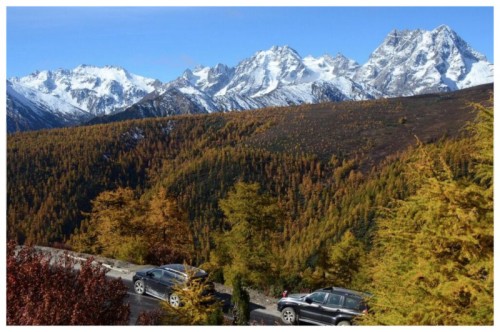 Our most popular Yunnan journey…
Our most popular Yunnan journey…- Why go? Read our blog essay right here…
- In a nutshell
- What?
- In just a few days, see how beautiful China can be!
- Discover where Shangri-La really might have been!
- Stunningly beautiful boutique hotels, along back roads, far away from the crowds.
- What?
- How long? 7 or 9 days
- How much? Starting from CNY23,700/person
- Click here for yet more info
PHOTOGRAPHY: Yunnan through a Lens: Tea Horse Trails – June 3rd
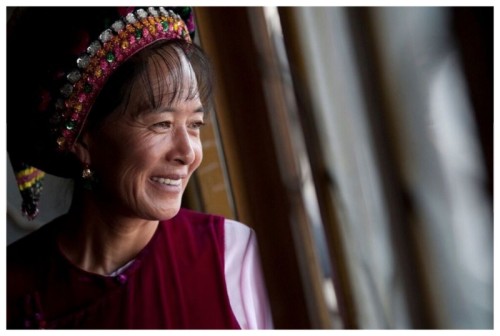 For photography lovers…there’s nothing like working with Ron!
For photography lovers…there’s nothing like working with Ron!- Read Ron’s recent short essay about travel photography in this region…
- In a nutshell
- Where? Hidden gems of Yunnan along the tea horse trail
- What?
- Capture moments with your camera like never before.
- Work, hands-on, with Ron and learn his techniques for portraits, landscapes, architecture, low-light and many other situations.
- How long? 6 or 9 days
- How much? Starting from CNY29,600/person
FAMILY: Adventures in Yunnan – July 4th and July 15th
 An unforgettable adventure for the whole family!
An unforgettable adventure for the whole family!- In a nutshell
- What?
- Experiences, not things!
- Haggling in the markets (in Pugonghua), gentle hiking, batik making, up-close-and-personal encounters with a Tibetan family…
- Memories of a great time together!
- What?
- How long? 8 or 10 days
- How much? Starting from CNY78,000 (for a family of 4) less early-bird discount of 10% for those who book by March 31st!
FAMILY & PHOTOGRAPHY: Travel Photography with Ron Yue – June 24thand October 21st
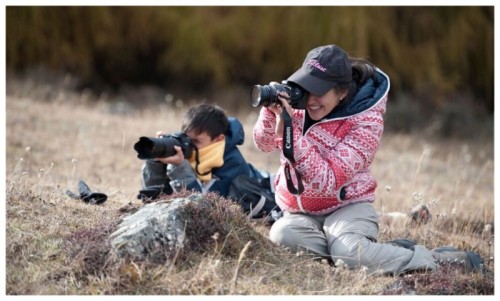 Start the holidays with a Family Adventure with Master Photographer Ron Yue
Start the holidays with a Family Adventure with Master Photographer Ron Yue- Click here for more info and read Ron’s latest blog entry about photography…
- In a nutshell
- What?
- Give your children the gift of photography…to see beauty everywhere!
- See beauty where others don’t, learn to simplify life, re-learn the value of patience…
- What?
- How long? 8 or 10 days
- How much? Starting from CNY84,720 (for a family of 4) less early-bird discount of 10% for those who book by March 31st!
CROSSING BORDERS into Lao and Vietnam – May 13th and September 16th
 Travel through ancient Asian Border Lands
Travel through ancient Asian Border Lands- In a nutshell
- What?
- At the best times of the year…
- … drive from Yunnan via northern Lao to Mai Chau in Vietnam.
- Discover, along back roads, a region brimming with different minorities…
- What?
- How long? 9 days
- How much? Starting from CNY39,900 less early-bird discount of 10% for those who book by March 15th!
- Alternative date September 16th : For a longer version “Summit to Sea: Yunnan to Vietnam”, please write to us for details.
 On 16 April, On the Road will be a live-auction sponsor at the annual Gala Dinner of a Hong Kong-based charity called Kids4kids. Our sponsored prize is for a family of four to join our “Family Adventures – Travel Photography in Yunnan” journey. We have designed this journey to inspire an interest in travel photography – the art of seeing beauty everywhere – something that might become a lifelong passion for children, and an activity that parents and children can share. In this world of “insta-” everything, having a chance to explore a new environment as a family and learning a new skill together provides a particularly meaningful break from the frenetic pace of everyday life.
On 16 April, On the Road will be a live-auction sponsor at the annual Gala Dinner of a Hong Kong-based charity called Kids4kids. Our sponsored prize is for a family of four to join our “Family Adventures – Travel Photography in Yunnan” journey. We have designed this journey to inspire an interest in travel photography – the art of seeing beauty everywhere – something that might become a lifelong passion for children, and an activity that parents and children can share. In this world of “insta-” everything, having a chance to explore a new environment as a family and learning a new skill together provides a particularly meaningful break from the frenetic pace of everyday life.
We are proud to be sponsoring several other charitable events in the months to come.
Happy Easter!
Over the Easter period, Angie and I will be in Europe. I’m selling it to her as a “holiday”. As she does every time, she will ask me “Do you call this a holiday?” Why? Because, during our trip we will be also researching a new itinerary that will run through the Czech Republic, Austria, Slovenia, Croatia and Italy (Fruili and Alto Adige). Whether business or pleasure – fortunately the two often overlap, we can’t wait to go!
We wish you, too, Happy Easter and a Peaceful Qing Ming!
Posted on 25 Feb, 2016
The small Yunnanese town of Yuanyang is famed for the steep tiers of rice terraces that snake across hillsides around the town. In winter, dawn light sparkling off the watery fields attracts legions of photographers eager to capture the sight on film – a group of On the Road photographers is about to leave for the region next week.
While many visitors come for the landscape, Yuanyang’s human side – the Hani farmers have worked the terraces for generations – is well worth exploring too. A few years ago, we were searching for a way to incorporate more contact with local communities into our itineraries. One of our guides, Zoe, had befriended the bellhop at Yuanyang’s Yunti Hotel, and he offered to introduce us to his uncle, who was the headman of a village amongst the rice fields.
One day in May, we set out from Yuanyang with a group of Swiss guests to meet the uncle and visit his village. The wisps of mist that enshrouded the rice fields slowly burnt off over the course of the walk to the village as our guests peppered the uncle with questions about village life.
The uncle took us to a house in the centre of the village. We had to duck to get through the door, and groped our way up a steep, dark staircase with a rope for a railing. The upstairs room was dark and smoky from cigarettes and an open fireplace, with a single window that allowed a cone of light to illuminate the room. Eight low stools were arranged around a small table for us. Our guests’ faces betrayed a mixture of delight – oh so exotic and friendly! – and fright – where had I taken them to?
We took our seats and while the Q&A session continued – what is the main trade of the village? Do you have a school? How many inhabitants are there? What’s the average income? What do you think about the future? How many people live in your house? — lunch began to be served. The plates gradually accumulated – at first two dishes, then four, then eight, then twelve, they just kept coming.
Eventually, the mayor motioned for us to begin eating when Zoe suddenly started crying and burst into almost uncontrollable tears. We all looked at her, unsure what to do. I patted her on the shoulder and asked, “Zoe, what’s wrong?”
“Nothing, it’s nothing, really,” she managed to say between sobs, “it’s just that, look, look at all this food! These poor people are serving up all this for us, but maybe they would only eat like this once a year themselves, maybe never in their lives…” As Zoe spoke, a guest, Edith, got up and walked to Zoe, pulled her to her feet and gave her a warm hug.
No words were spoken while Zoe and Edith stood there hugging, but perhaps for a moment we all felt linguistic and cultural barriers giving way to a moment of shared emotion. At a time when nationalistic fires are being fanned around the world, it seems a timely reminder that behind the headlines there are millions of ordinary people, like the bellhop’s uncle, and like Zoe and Edith, who are making their way through life, trying to do the best for their families, and trying to lead good lives. Travel is one fantastic way to remind ourselves of this, and as Mark Twain put it in The Innocents Abroad, adapted somehow for this story:
“People need travel sorely. Broad, wholesome, charitable views of men and things cannot be acquired by vegetating in one little corner of the earth all one’s lifetime. Travel, then, is fatal to prejudice, bigotry and narrow-mindedness.” Let us celebrate these fatalities!
On the Road takes you to Yuanyang rice terraces on these journeys:
- Photography with Ron Yue – Yunnan through a Lens: Red Earth and Fields of Gold
- Photography with Ron Yue – Yunnan through a Lens: The Exotic South
- Discovery – From Yunnan to the Lanna Kingdom
